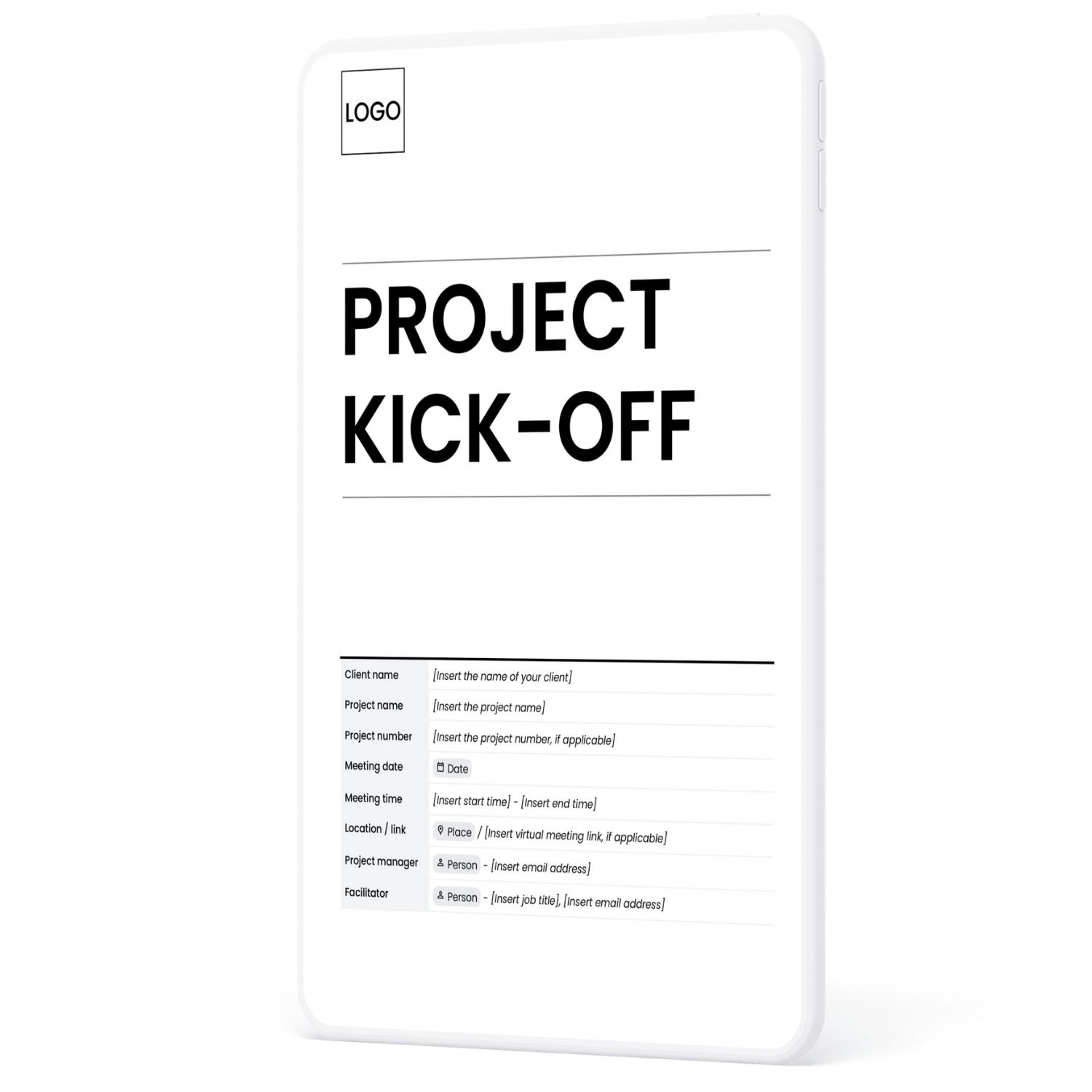Starting a new project is always an exciting adventure. The possibilities feel endless, and the prospect of delivering something meaningful can be incredibly motivating.
But it can also be risky if you jump in without a plan. Missed details, unclear expectations, and scope creep can derail even the most promising opportunities.
A project kick-off meeting is your secret weapon. It’s the moment you and your client align on the vision, responsibilities, timelines, and processes before any real work begins. But a great kick-off meeting doesn’t just happen. It’s the product of preparation, structure, and follow-up.
Before you schedule the meeting, make sure contracts are signed, payment terms are agreed, and any key resources or logins are gathered. Use our best-seller Statement of Work template to streamline this process and ensure all agreements and expectations are clearly documented before the project officially begins.
Then, during the meeting, focus on these 7 must-cover topics to ensure a smooth start.
1. Set the stage with introductions and objectives
Kicking off a project effectively begins with creating a positive, organized start. Taking a few minutes to introduce yourself, your team (if applicable), and the client team is more than a courtesy – it sets a collaborative tone and shows professionalism. A clear understanding of the meeting’s purpose ensures everyone is aligned and ready to participate meaningfully.
Why it matters: When everyone knows who’s involved and why the meeting exists, discussions are more focused, productive, and efficient. First impressions matter; a well-structured opening signals that you take project management seriously.
What to cover:
- Briefly introduce yourself and your role in the project.
- Invite the client to introduce their team members.
- Clarify the purpose of the kick-off meeting and what you hope to achieve.>
2. Align on project goals and vision
Before diving into tasks and timelines, it’s crucial to establish a shared understanding of why the project exists. Clarifying goals and vision keeps both you and the client on the same page and ensures that every decision you make is purpose-driven.
Why it matters: Misaligned goals are a major source of friction in freelance projects. By addressing objectives early, you minimize the risk of scope creep and confusion later.
Key discussion points:
- Define the problem the project is solving or the opportunity it’s pursuing.
- Determine how success will be measured – KPIs, deliverables, or client satisfaction.
- Identify the top priorities if trade-offs become necessary.
3. Clarify scope, deliverables, and milestones
Once the project’s purpose is clear, it’s time to define what you’re delivering, when, and in what format. This section translates abstract goals into concrete actions and timelines.
Why it matters: Clearly defined deliverables and milestones prevent misunderstandings, ensure accountability, and provide measurable progress markers. Clients feel confident when they know exactly what to expect.
Consider discussing:
- A detailed list of deliverables and what’s explicitly out of scope.
- Rough timeline or key project milestones.
- Feedback, review, and approval process to keep work on schedule.
4. Define roles, responsibilities, and communication
Projects run smoothly when responsibilities are clearly defined and communication channels are agreed upon. Use this section to clarify who is responsible for what, how decisions are made, and how updates will be shared.
Why it matters: Lack of clarity can lead to bottlenecks, miscommunication, and frustration. Setting expectations upfront saves time, improves accountability, and strengthens the freelancer-client relationship.
Topics to cover:
- Your responsibilities versus client responsibilities (approvals, asset provision, etc.).
- Decision-making process and key points of contact.
- Preferred communication methods and expected response times.
5. Identify risks, assumptions, and dependencies
Every project carries potential risks. Taking the time during the kick-off to acknowledge known risks, validate assumptions, and identify dependencies helps you manage obstacles proactively.
Why it matters: Being proactive about risks demonstrates professionalism and ensures that small issues don’t become major problems down the line. It also helps clients trust that you are prepared for challenges.
Points to cover:
- Any existing challenges or blockers.
- Critical assumptions that must hold true for project success.
- Risk mitigation strategies and contingency plans.
6. Review tools, resources, and access
Before work begins, confirm that all necessary tools, resources, and access points are ready. Missing access, unclear processes, or incomplete resources can stall progress and frustrate both you and the client.
Why it matters: Ensuring resources are in place upfront allows you to start delivering immediately and keeps the project on schedule. It also signals organization and preparedness to the client.
Topics to discuss:
- Project management platforms, file-sharing tools, and collaboration software.
- Access to accounts, credentials, or technical systems.
- Any necessary training or onboarding for tools or systems.
7. Wrap up with next steps and key takeaways
The final step of the kick-off is to leave the meeting with clarity on what happens next. This ensures that everyone is accountable for follow-up actions and maintains momentum.
Why it matters: Ending without clear next steps can cause confusion, delays, and misaligned expectations. A strong close reinforces professionalism and builds confidence with the client.
What to include:
- Confirm the decisions and agreements made during the meeting.
- Assign action items with deadlines.
- Schedule follow-up check-ins and define how progress will be tracked.

Supercharge your kick-off
Start your projects with clarity and confidence using our Project Kick-Off Meeting Agenda Template. Designed for freelancers, it helps you set the tone for success right from the beginning. Use code WEB10 for 10% off!
A successful project kick-off sets the tone for everything that follows. By taking the time to align on goals, define deliverables, clarify roles, address risks, and establish clear communication, you’re not just starting a project – you’re setting it up for smooth execution, on-time delivery, and happy clients.
With these steps in place, you’ll have a solid foundation to tackle any project with confidence and professionalism.

